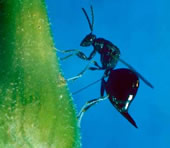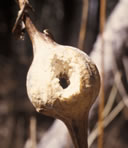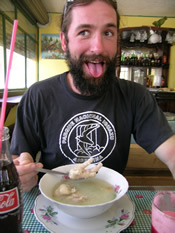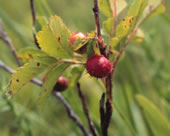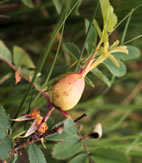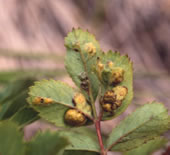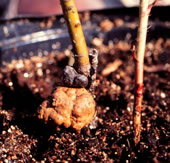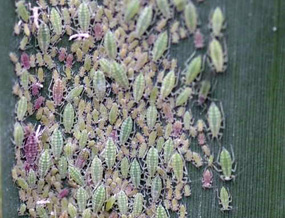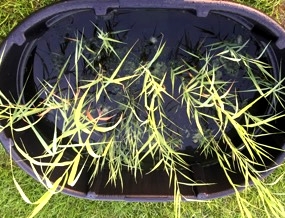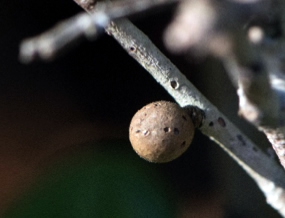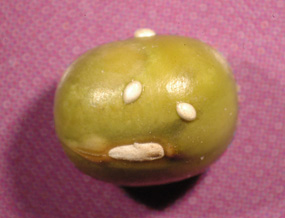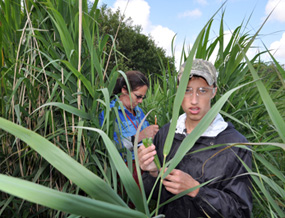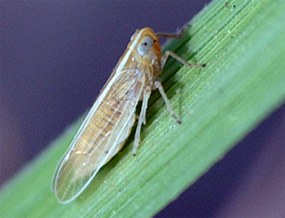Host-Plant Choice by Herbivores and Their Enemies
A question that has always intrigued me is what are the ecological and evolutionary factors that influence host choice or diet breadth in insect herbivores and their natural enemies? I first started to work in this area while I was a postdoc under Warren Abrahamson's direction at Bucknell University. The subject of my research on host-plant choice was the stem-galling insect, Eurosta solidaginis, which attacks several species of goldenrod in the genus Solidago. My research has focused on three broadly related areas:
1) the role of dispersal ability, other herbivores, and temporal fluctuations in plant acceptability and suitability, on host choice by the stem galler (Cronin & Abrahamson 1999, 2001, 2001, Cronin et al. 2001, Smith et al. 2002);
2) the ecological and evolutionary response by a parasitic wasp, Eurytoma gigantea, to the recent host-plant shift by the stem galler from Solidago altissima to S. gigantea (Cronin & Abrahamson 2001);
3) and the role of avian predators in the maintenance of host-plant associated races of the stem galler (Poff et al. 2002). This three-trophic level system has been ideal for studying questions of insect diet breadth.
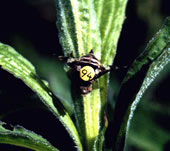
On a related subject, a former master's student of mine, Mark Williams, studied the ecological factors that influence the structure of cynipid gall wasp communities on prairie rose (Rosa arkansana). Specifically, Mark examined the role of plant stress (due to high salinity and nutrient-poor soils) on the distribution and abundance of the five cynipid species associated with prairie rose. Mark conducted a manipulative field experiment that included the treatment of soils with various levels of nitrogen fertilizer and salt. The recruitment of cynipids to roses and their performance on those roses were examined over the course of a single growing season. This study was published in Environmental Entomology (Williams & Cronin 2004). Mark and I are currently using this data set to examine the role of bottom-up effects (changes in soil nutrient and salinity levels) on the abundances of the cynipid inquilines and parasitoids. Currently, Mark is a fire ecologist for the Bureau of Land Management in Rawlins, Wyoming.

